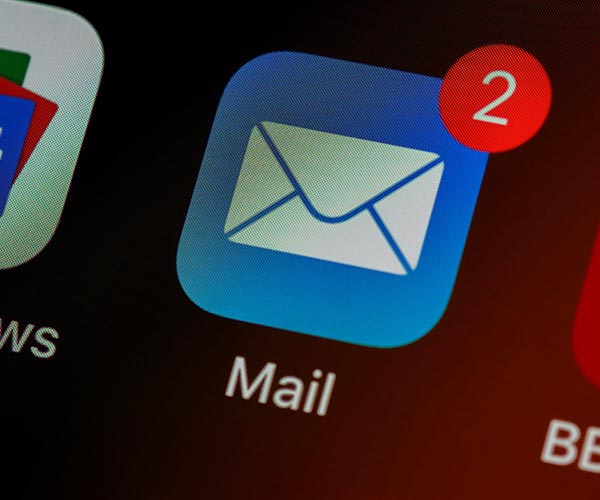Don’t fear the DApp: getting corporates hip to consumer-facing blockchain tech
Alexa Smith
There is an ongoing debate in the blockchain space around what the “killer app” will be (*groan*) and who will ultimately drive blockchain’s adoption – consumers or enterprise. I’ve attended multiple panels recently where the conversation turned heated on this particular topic. Proponents on the consumer side argued that isolated corporate experimentation on permissioned ledgers can’t and won’t drive widespread adoption, citing our consumer-tech overlords Uber and Airbnb. The pro-enterprise camp refuted that adoption will ultimately require the scale and financial investment of corporates. As someone who works on the enterprise side of blockchain but also experiments with the tech myself as a consumer, I tend to sit somewhere in the middle. As such, I’ve recently found myself fascinated by the possibility of corporates adapting and adopting some of the more interesting consumer-facing decentralized applications, or DApps.
 Picture source: blockchainmagazine.net
Picture source: blockchainmagazine.net
This isn’t totally crazy – there are examples of B2C going B2B in the Internet-world today. Let’s take our aforementioned overlords, for example. Uber Freight was launched in May 2017, eight years after Uber’s inception (approximately 9,000 years in tech-years). In just one year, Uber Freight reached $500M in annual revenue, leading Uber to spin out Uber Freight into its own business, double-down on its investment, and expand into Europe. Airbnb for Work was launched in 2014, six years after its founding in 2008. Since then, business travel bookings have tripled year-on-year, and 700,000 businesses have signed up and booked with Airbnb for Work.
These are just two examples, but it seems there may be something to bringing consumer apps into a business context. Do we really need to wait another eight years until we’re swapping employee trading cards like CryptoKitties? Why don’t we start looking into it now and save ourselves the misery of living without it and maybe even come up with our next big business idea in the process!
As a start, it’s helpful to get a feel for what some of the most popular consumer DApps are today. Sites like State of the DApps provide rankings for over 2,200 DApps based on several criteria, including number of active users, transaction volumes, developer activity, and user recommendations. While these rankings change frequently, there are a few key use cases (beyond gambling!) that continue to dominate the top spots, including content creation, loyalty programs, and prediction markets. Let’s dig into these use cases a bit to explore how corporates might find value in what are today consumer applications.
Content creation
As of today (June 19th), Steemit is ranked as the #1 DApp on State of the DApps. Steemit has created a platform which aims to cut out social media middlemen who extract revenue from content creators and allow consumers to upvote and reward high-quality material through the use of Steemit’s native cryptocurrency, STEEM tokens. Think of it as Medium, where your “claps” translate into real financial rewards. Another example is Brave, a browser which allows you to directly reward websites that you enjoy with Basic Attention Tokens (BAT), which you can either purchase or earn by enduring some ads (which we do today for free).
In a business context, if we take the example of Medium, corporate participation on Steemit could result in a new revenue stream just from actively maintaining an online presence, all the while upping the company’s brand and rewarding individual contributors within the company. As another example, what if a company were to implement a customer-facing version of something like Steemit, where customers could directly upvote and fund certain projects or products? Projects like DEIP are exploring the use of similar content-reward mechanisms for peer-reviewing scientific papers and research.
Loyalty programs
Loyalty programs in our centralized world today aren’t great. As consumers, we’re expected to manage different loyalty programs for every company with whom we interact, continually accept new terms and conditions that downgrade the value of our points, and, worst of all, sometimes carry around a real stamp card in your real wallet. The fact that consumers are simultaneously fed up with loyalty programs and comfortable with using “funny money” loyalty points makes for an easy transition over to DApps and tokens. This could be why we see so many loyalty-related DApps high up in the rankings, including Geon, which doles out rewards for visiting specific locations, and Actifit, which rewards daily physical activity.
In a B2B context, crypto-rewards could be automatically disbursed into customers’ wallets for purchasing raw materials, goods, or services though a company-branded DApp. In a more interesting scenario, a consortium of competitors might even get together to offer a loyalty program for purchasing more sustainable materials, for example, deforestation-free palm oil. By “combining” loyalty programs, the companies can create liquidity in the market for these sustainable goods which everyone is paying more for (both to produce and to consume), drive competition between customers who can publicly share their growing rewards, and allow customers to redeem rewards for even more sustainable products, putting a positive cycle in place.
Decentralized prediction markets
People love to give their opinion, and it turns out that if you harness that information correctly, you may well be able to predict the future! Prediction markets leverage the “wisdom of the crowd” to divine outcomes to certain events. Prediction markets aren’t new – they’ve been around since the 90’s – but the addition of blockchain has drawn new attention to them. By making a prediction market decentralized, we can do interesting things like delegate the data source for when and how a market ends to an oracle versus relying on a third-party to make the decision, incorporate real-time data sources via APIs, and disburse micropayments instantaneously back to market winners. Platforms like Augur are gaining traction with consumers today for things like sporting events, cryptocurrency prices, and even assassinations (eek!).
I find prediction markets to be even more interesting in the corporate context. What if a company could leverage prediction markets to make better informed strategy decisions or investments, or to predict future trends that we are basing our business on today? Most corporate decision-making is done behind closed doors without incorporating global experts and data sources. Expanding the scope of where this information comes from could allow businesses to better predict everything from agricultural commodity prices to consumer behavior patterns, from the impact of a potential acquisition on company stock prices to the next CEO.
In summary, while we can’t predict what DApp will be at #1 next year (or even tomorrow), it certainly would behoove corporates to keep a pulse on the consumer side of blockchain so that we aren’t waiting for Uber and Airbnb (or Facebook…) to serve us up something again years down the road. After all, in a perfectly decentralized world, with some luck, we won’t even have these overlords anymore!
Author: Alexa Smith (views are author’s own)
5-HT Chemistry & Health Newsletter
Want the latest tech and industry news, events, relevant info from the ecosystem and more?
Subscribe to 5-HT Newsletter now Subscribe to 5-HT Newsletter now
Become part of the 5-HT Chemistry & Health
Exchange ideas with innovative startups and future-oriented companies in our ecosystem. We look forward to meeting you!